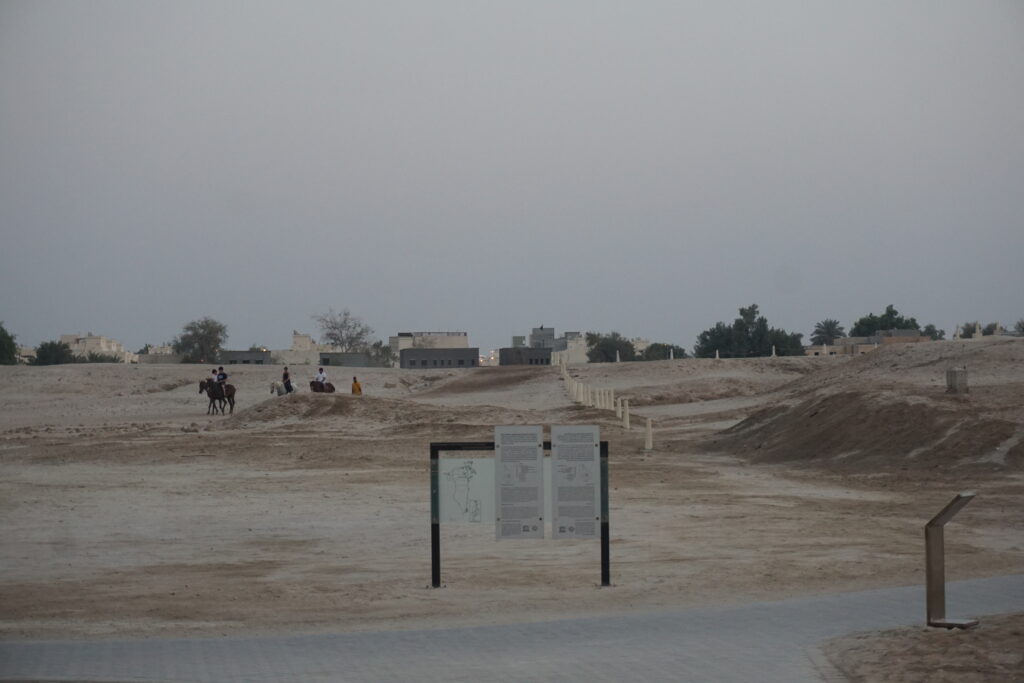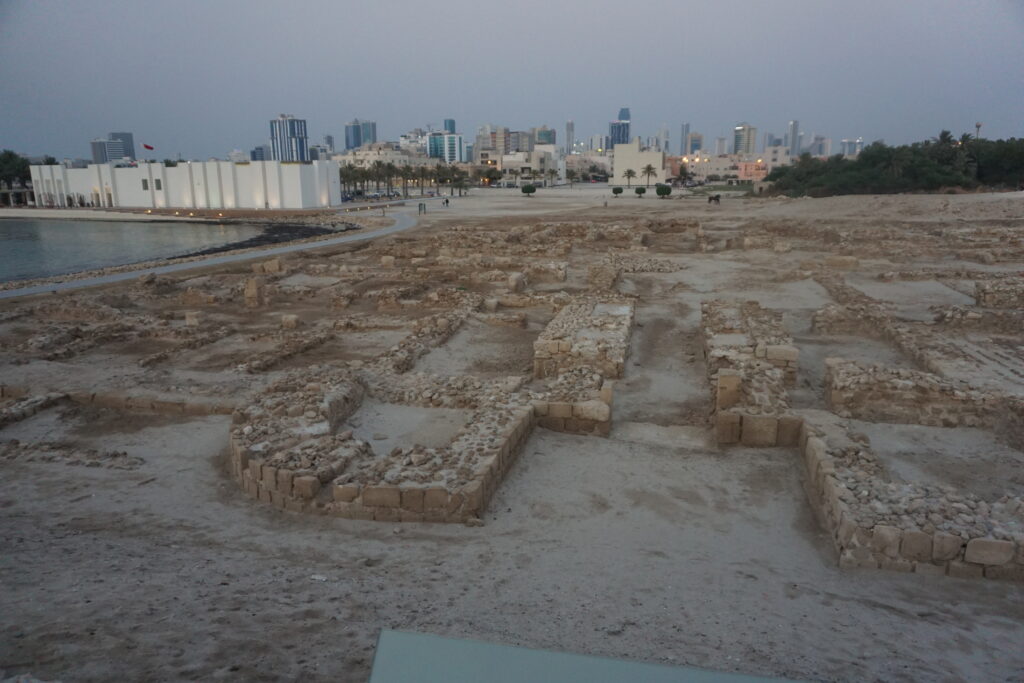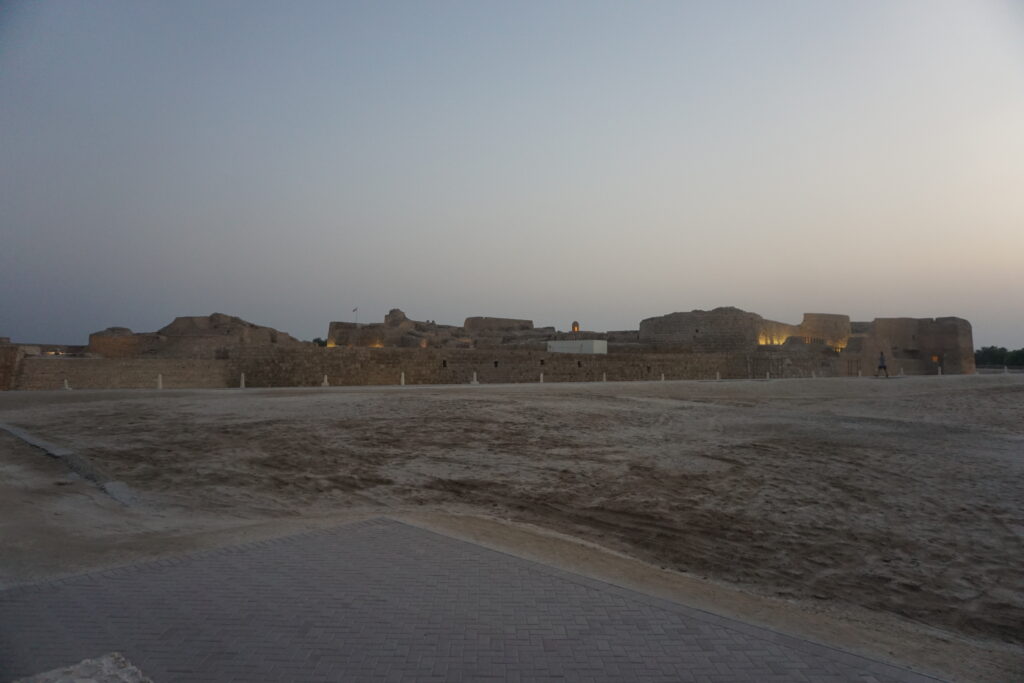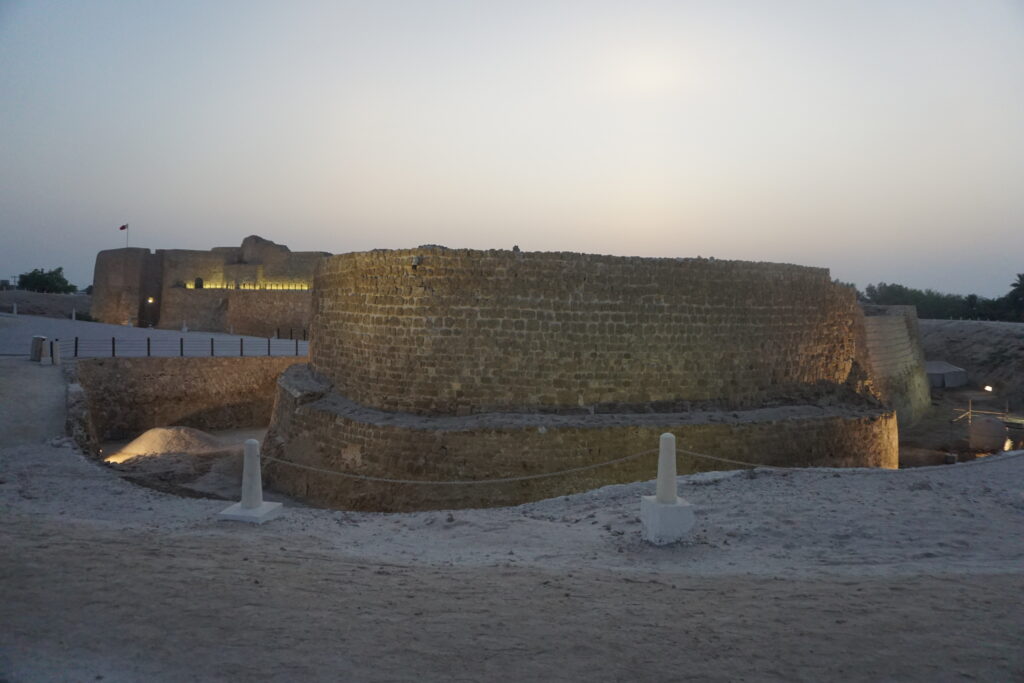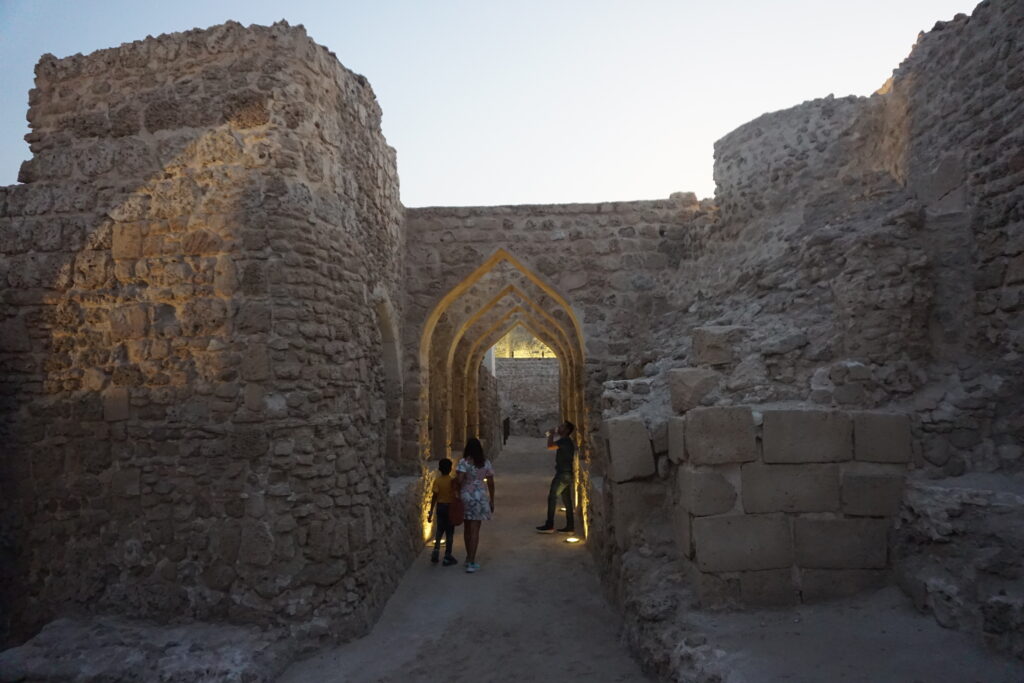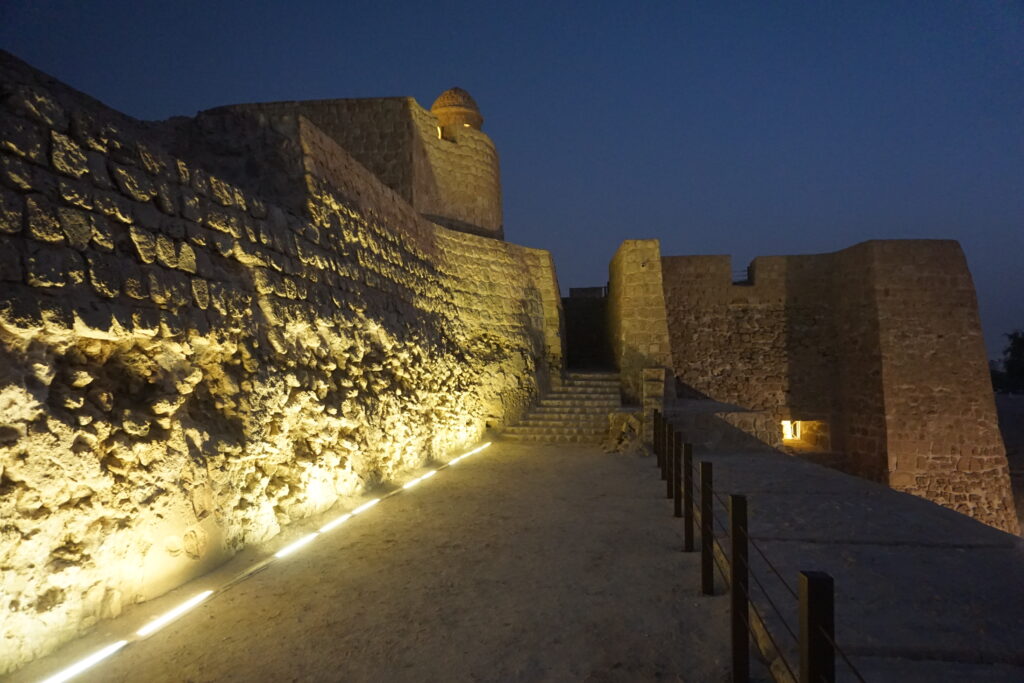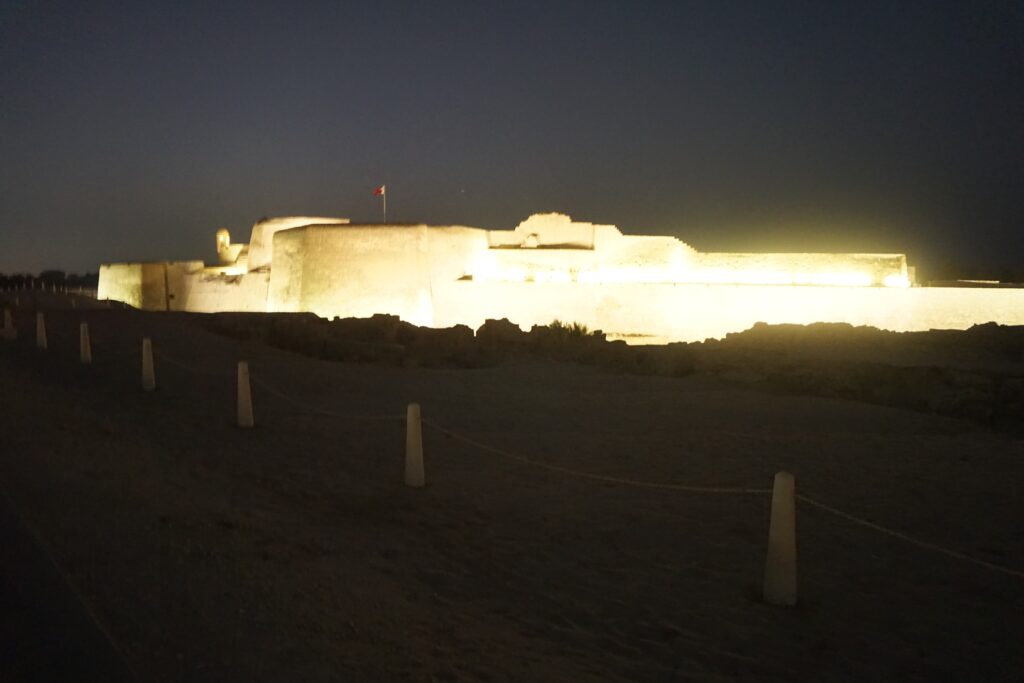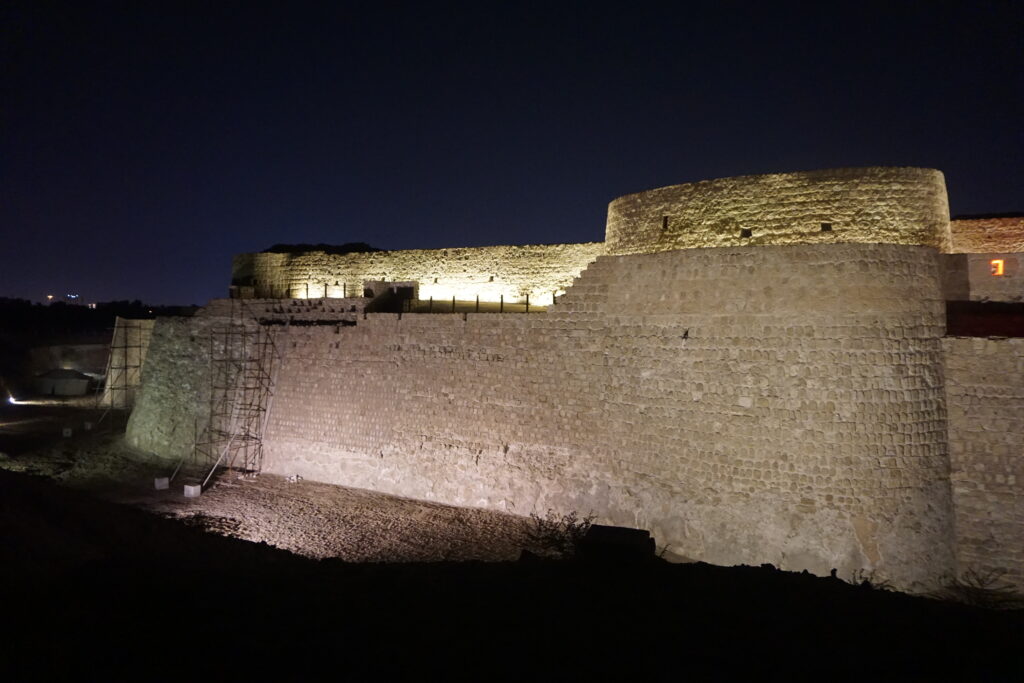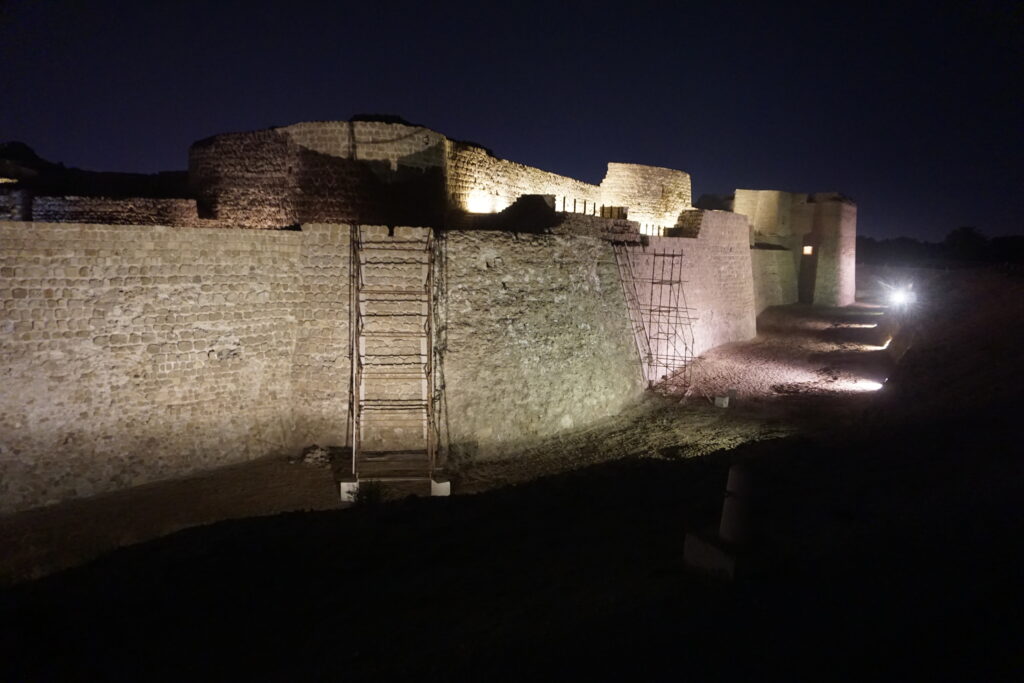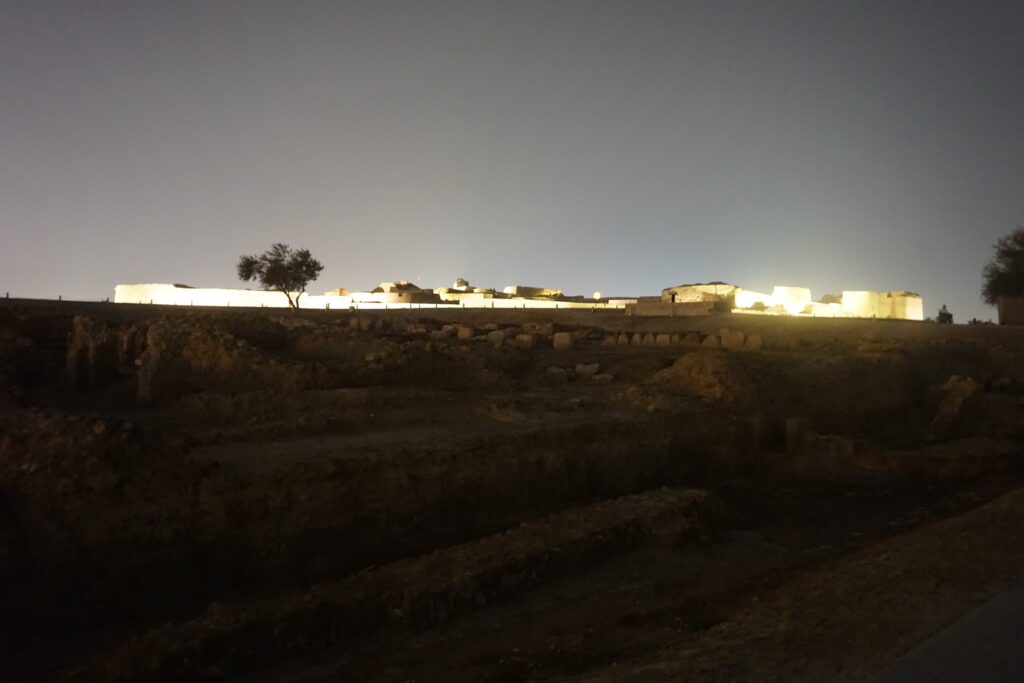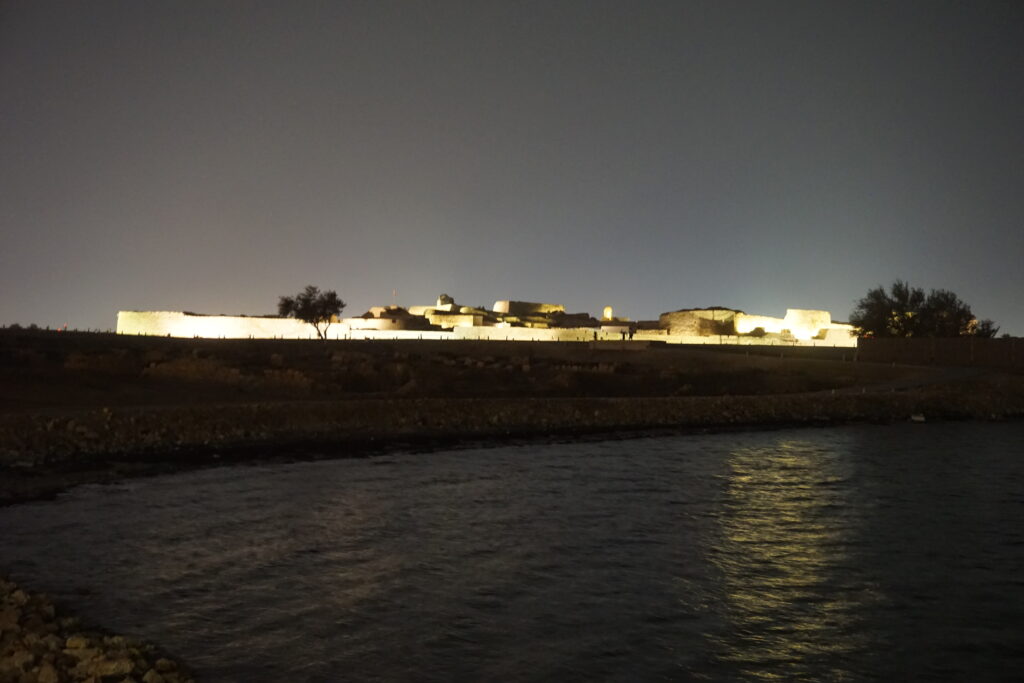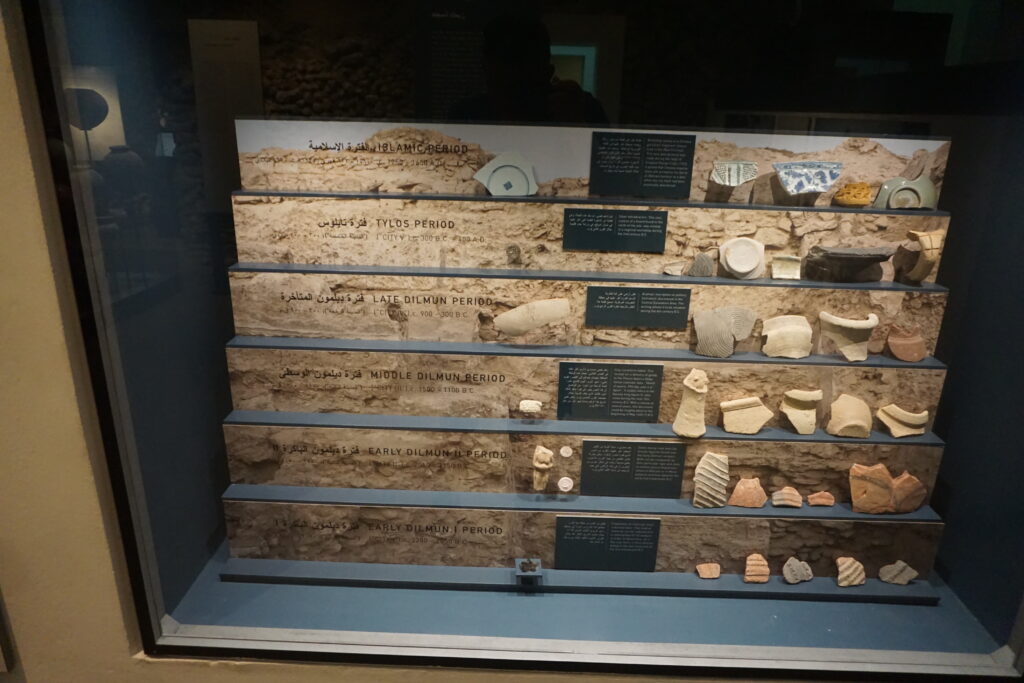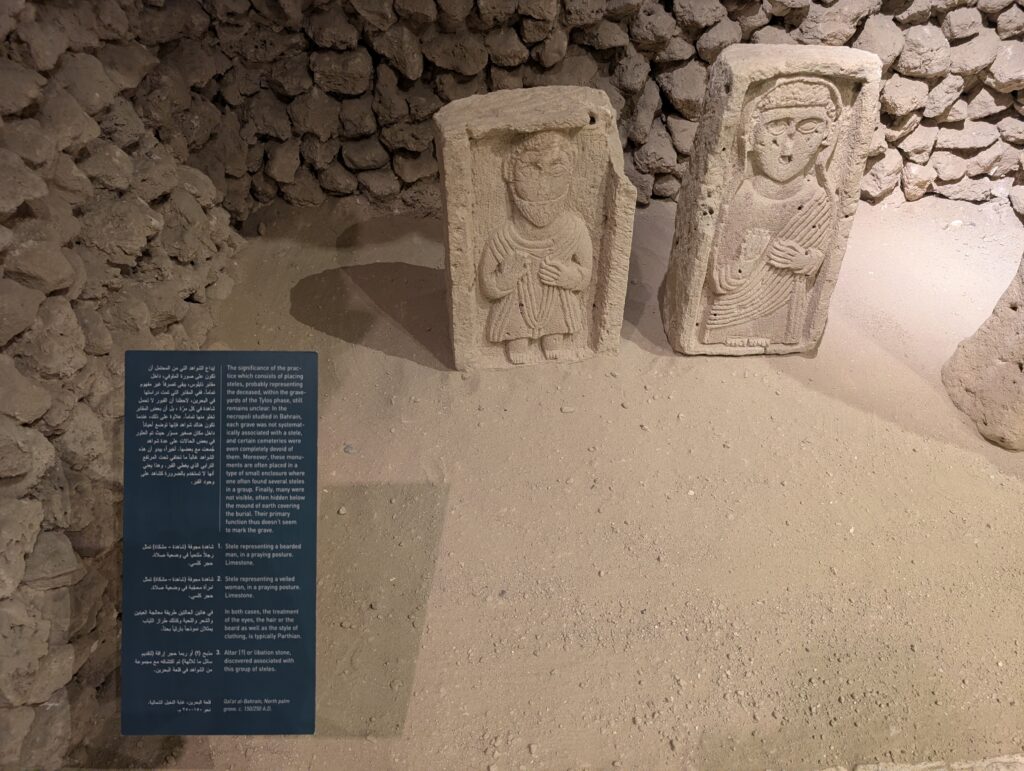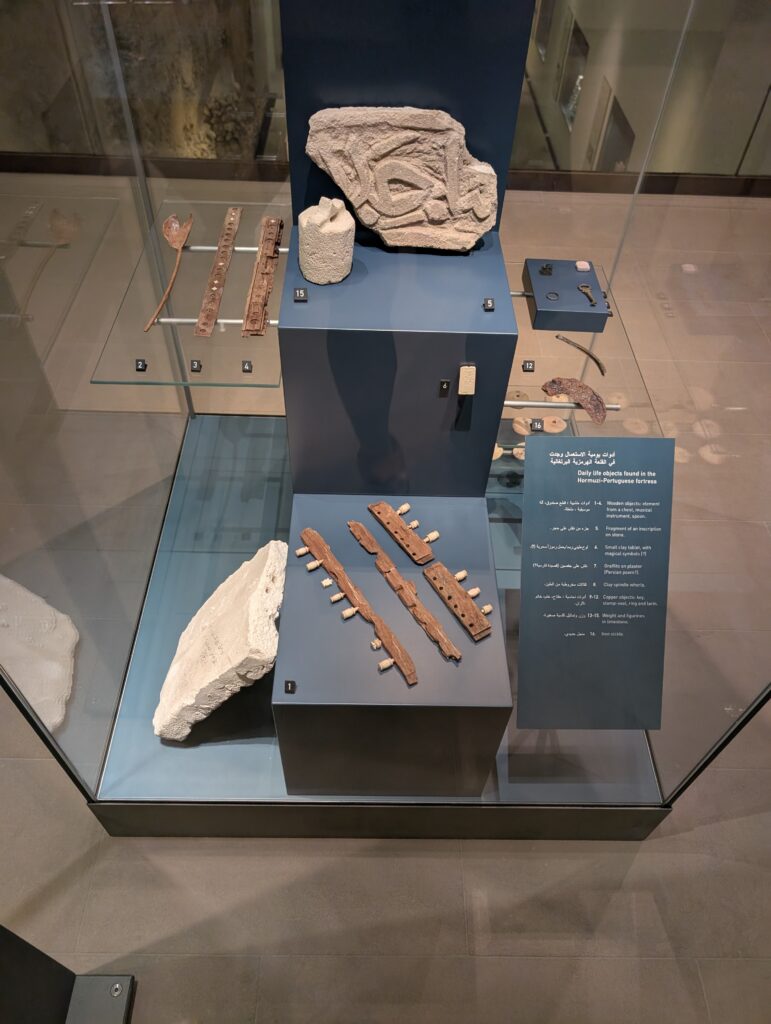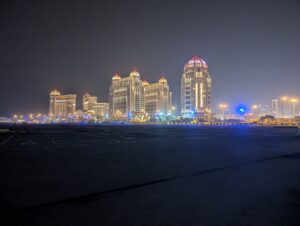Bahrain
Ancient Trading Hub, Pearling Center, Oil Exporter
I did not originally plan to visit Bahrain on this trip. Once I had decided my only stop in India would be Bombay, however, I was left with at least five days in Qatar. I knew I wanted to spend a few days in Qatar, but five seemed too many. It would be extremely hot in any of the Gulf States in August, and there would only be so many inexpensive indoor things to do in Doha. I decided I would use one visiting day and one travel day to wedge a stop in Bahrain between India and Qatar. Bahrain is a tiny country, after all, and I figured it probably just had the one city to visit. I pictured in my mind a place not much bigger than Singapore, where the whole country is essentially one city.
You cannot really see everything in Bahrain in one day, however. I came up with an aggressive plan to see all that I could. Ultimately, I was only able to really explore the area around the capital city of Manama. I had not really done all that much historical research on Bahrain before visiting. Once there, however, I learned that Bahrain has a fascinating history in trade, pearling, and of course, oil. Bahrain has since moved to diversify its economy, and has established a significant regional banking industry. Recent archaeological finds show that Bahrain has an extremely long history as an important trade hub, dating back to the dawn of recorded history.
Bahrain is a tiny country, less than ¼ the size of Rhode Island. The entire country is an island 32 miles long and 11 miles wide, about 20 miles off the northwest coast of Qatar. Qatar is the peninsula jutting northward into the Persian Gulf out of the eastern shore of Saudi Arabia. It was once a British protectorate, like the United Arab Emirates. When the seven emirates were discussing forming a confederation, Qatar and Bahrain were in on the talks, but chose not to join thus retaining their independence in the aftermath of the British exit. Both are relatively progressive Muslim countries that are easy to visit and friendly to Western visitors.
One interesting fact about Bahrain is that their currency is significantly stronger than the U.S. dollar. At the time of this writing, one Bahraini Rial is worth $2.40. It is so powerful it is divided up into 1000 fils, rather than 100 cents. I had to be a bit careful when doing transactions. I had spent so much time in countries where the currency converted at 300, 4000, or even 26000 to the dollar that I was used to hearing high numerical prices on everything. In Bahrain, a meal that cost 10 rials was actually relatively expensive, whereas a meal costing 400 Indian rupees was still a bargain.
(Continued)


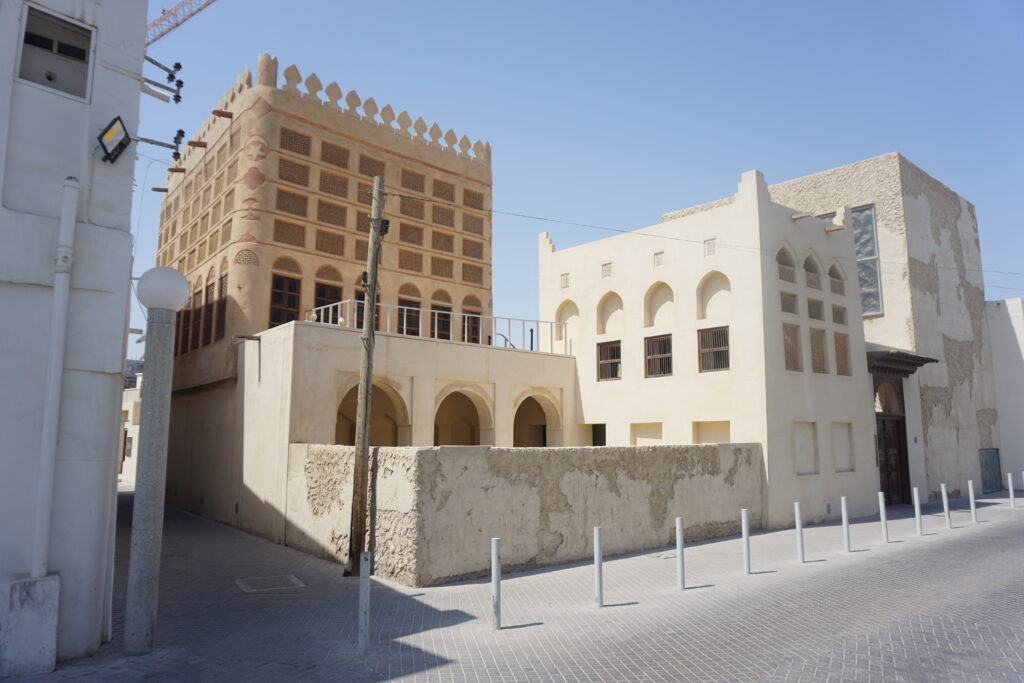
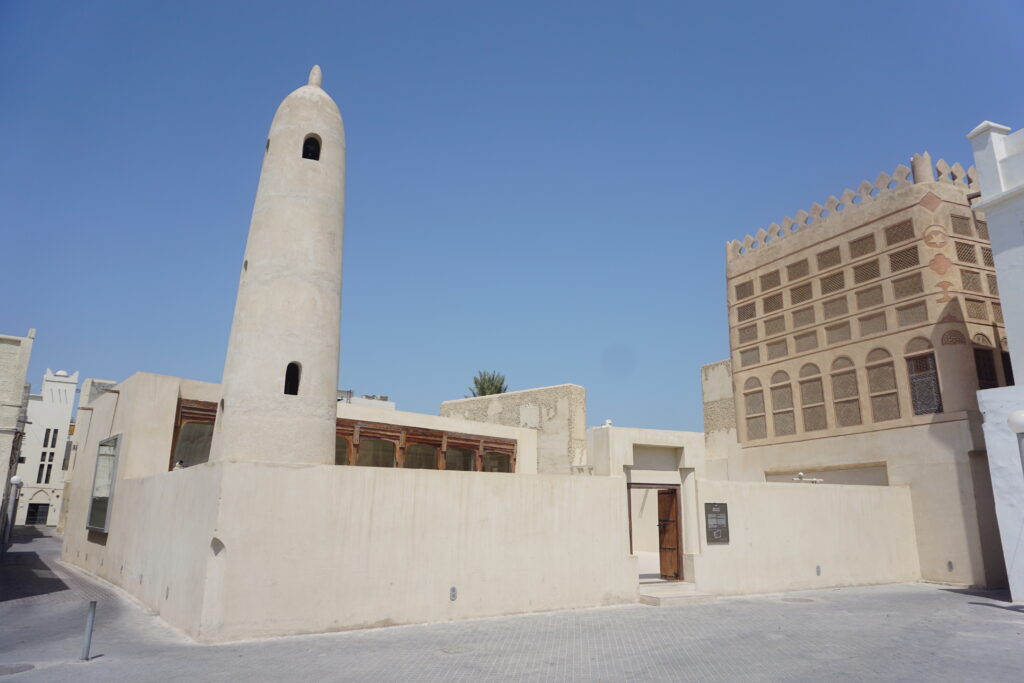


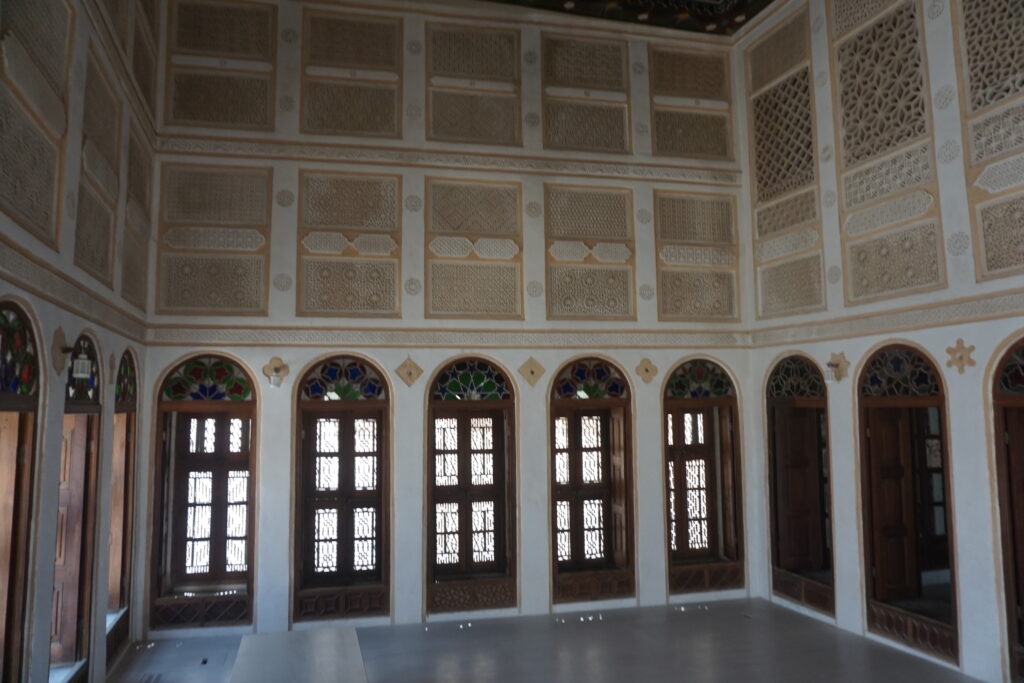
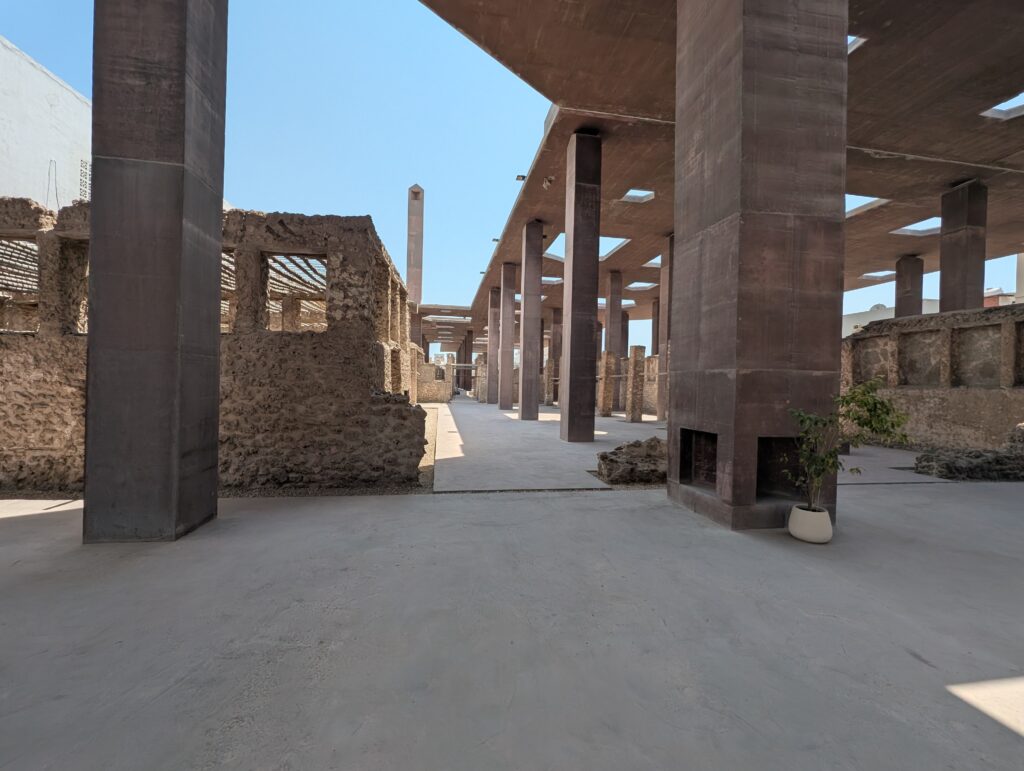
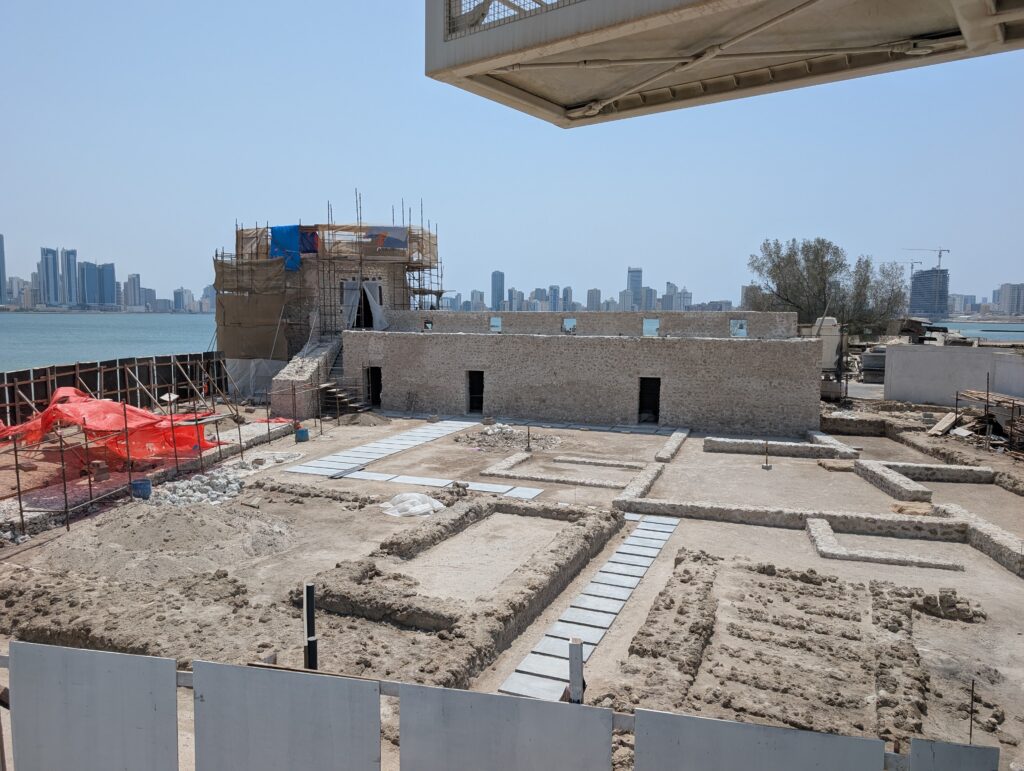
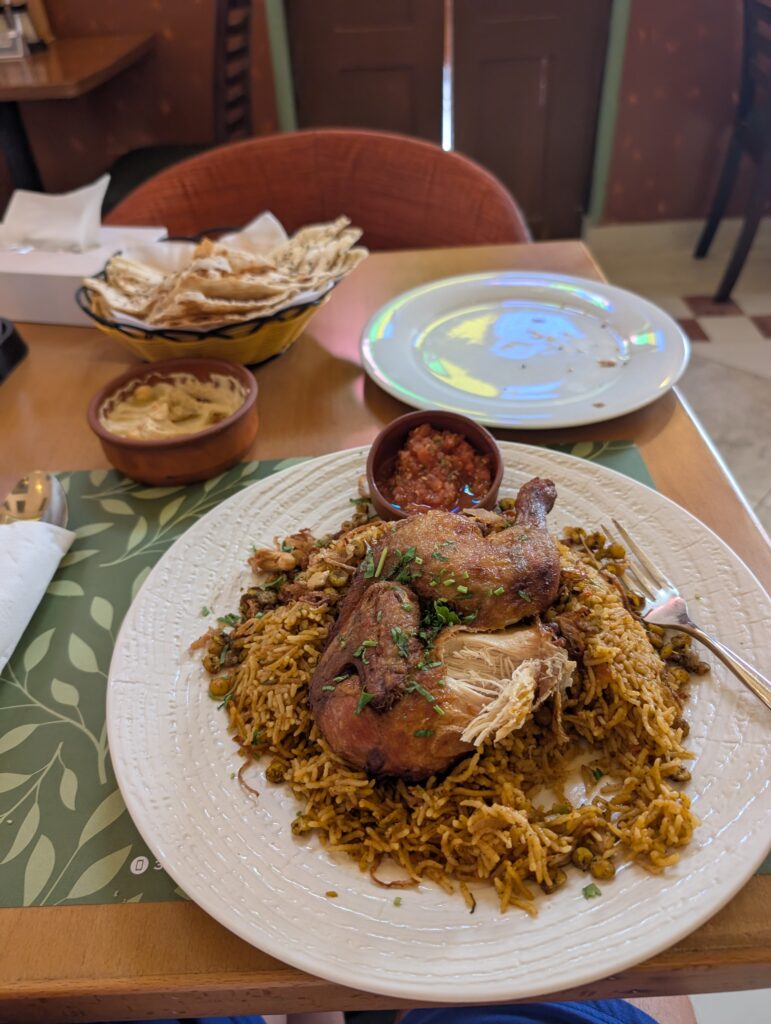



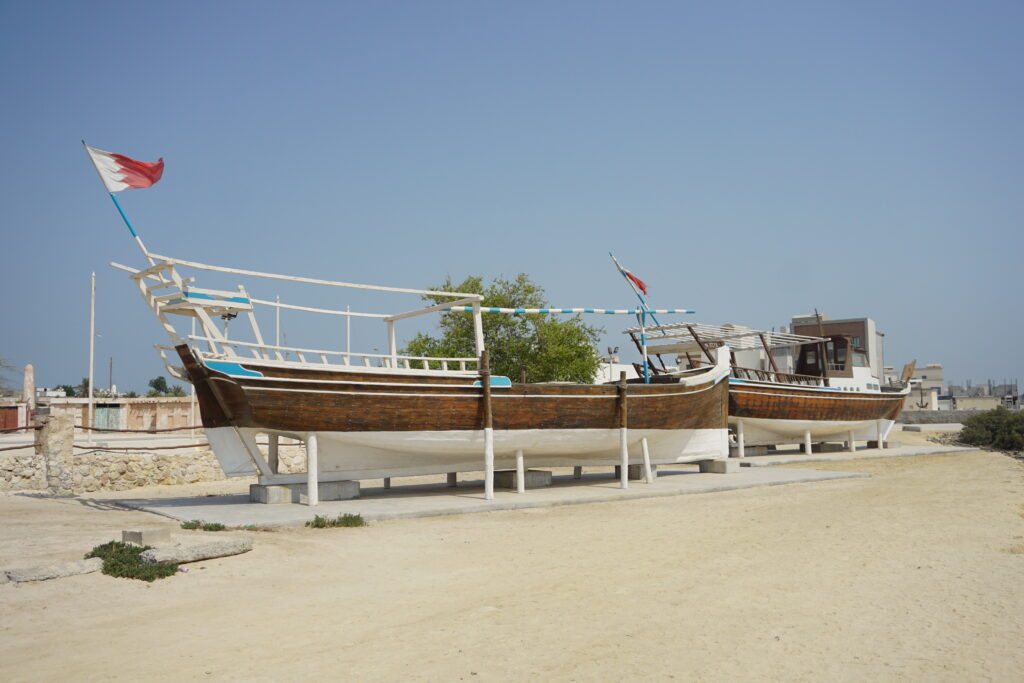




I arrived in Bahrain late at night. Fortunately, the buses were still running, and I was able to catch public transportation to within a mile of my motel. I had redeemed some Wyndham points for two nights at the Ramada in Manama. Despite my late night arrival at a point not that distant from my motel, I was drenched in sweat by the time I walked through the automatic doors into the crisp, conditioned air of the Ramada. Every decent building in the Gulf States has a cranking, cold air conditioner. As soon as I was in the door, I had instant relief from the heat.
I saw no need to exercise in the morning. It was too hot anyway. I knew I was going to do enough walking and sweating to burn any calories I would consume during the day. I grabbed a drink and snack from a local shop, and set off to see what I could in my limited time. It wasn’t the wisest move, but I started by going to Bab Al-Bahrain, an interesting building which serves as the entrance to the Manama Souq. I correctly figured that it would be a bit cooler walking through the souq early in the morning. While that was true, not much was open in the market on a weekday morning at that hour. I did see the architecture of the Bab Al Bahrain building, but the souq itself was not that impressive when most of the shops were closed.
My next stop was the Pearling Path. Bahrain has worked with UNESCO to have a string of buildings in the Muharraq neighborhood preserved as testimony to their status as a world leader in the extraction and export of pearls in the centuries leading up to the 20th. The buildings are not on contiguous property, but are tied together by a walking path lighted by fixtures designed to look like pearls. There are homes and mosques built and dedicated by the pearling magnates of this bygone era. Many of the residential buildings have a majlis, or sitting room, designed to host guests and negotiate deals. Some buildings have been partially converted into small museum exhibits containing pearling industry artifacts.
At the seaside end of the Pearling Path, there is a fort and a visitor center. It is assumed tourists will begin by the seaside and work inland, opposite of my route. The visitor center was an air conditioned building with very little interpretive material inside. There were protected ruins of a very old warehouse on the adjacent property, however. The fort near this end was called Qalat Bu Mahir. There was a small museum located there as well, but the fort was otherwise closed for renovations.
I went next to a couple of other sites that were either closed or partially closed, in spite of their associated websites listing them as open. I was able only to walk up to the outside of the Arad Fort. I was able to walk through the museum associated with the Al-Khamis mosque, but the ruins of the ancient mosque were roped off. I could see it from a distance and take some zoomed in pictures. The museum explanation was pretty good, though, and they had a nice, small artifact collection. This closure was due to the chief archaeologist holding up visitors while work was done on the ground lighting, which was taking a lot longer than had been proposed. Although the present building dates to the 12th or 13th century, the oral history and tradition say a mosque was first built here in the early 8th century, making this the oldest mosque in Bahrain.
(Continued)





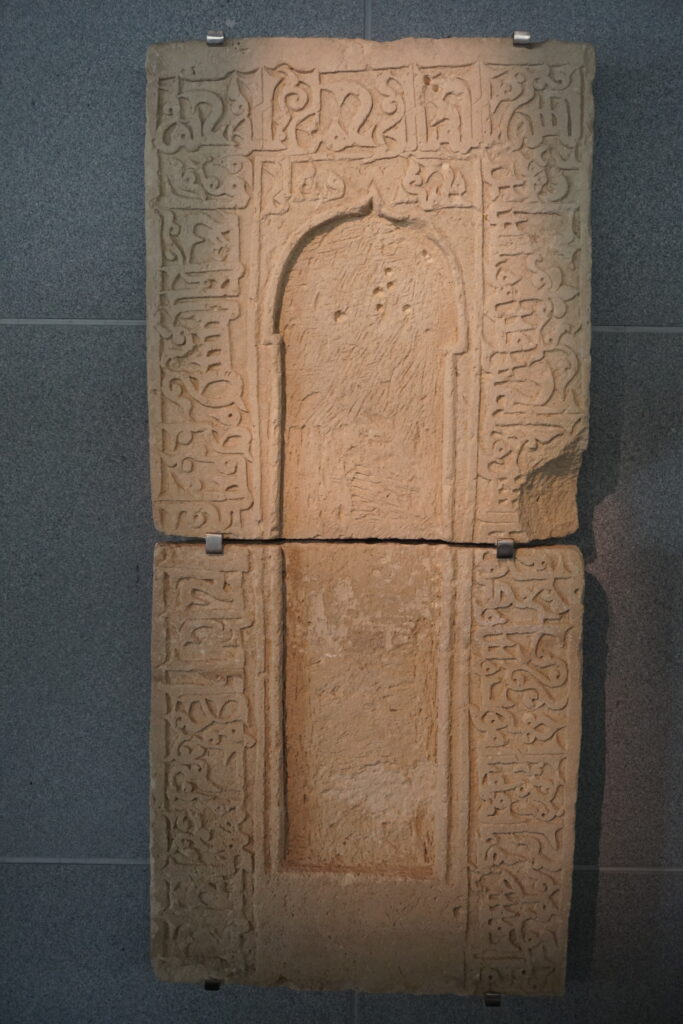
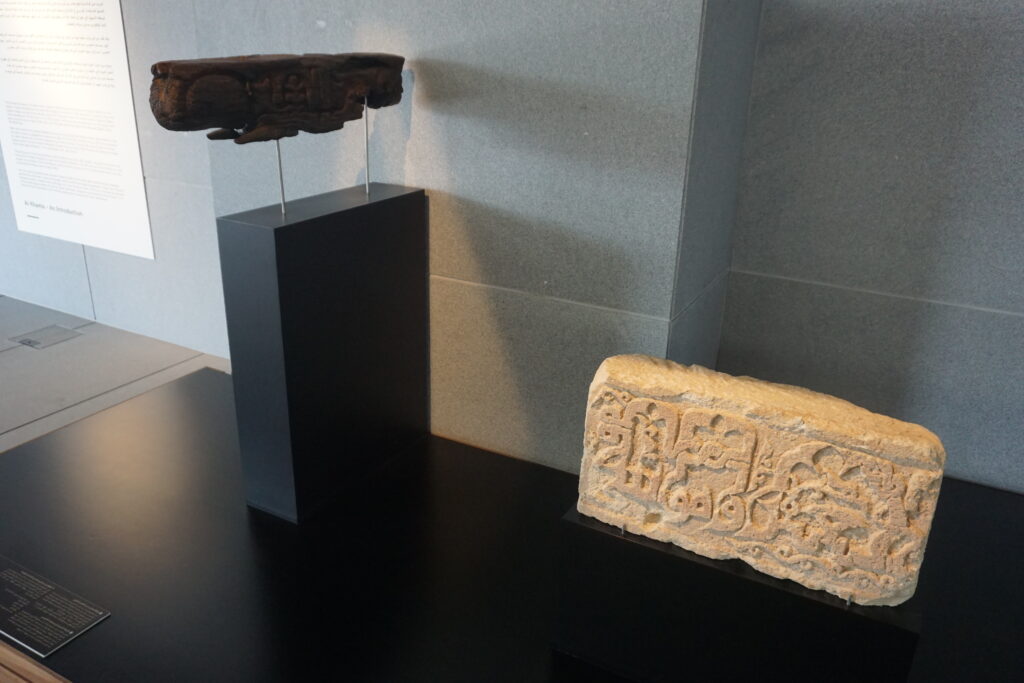

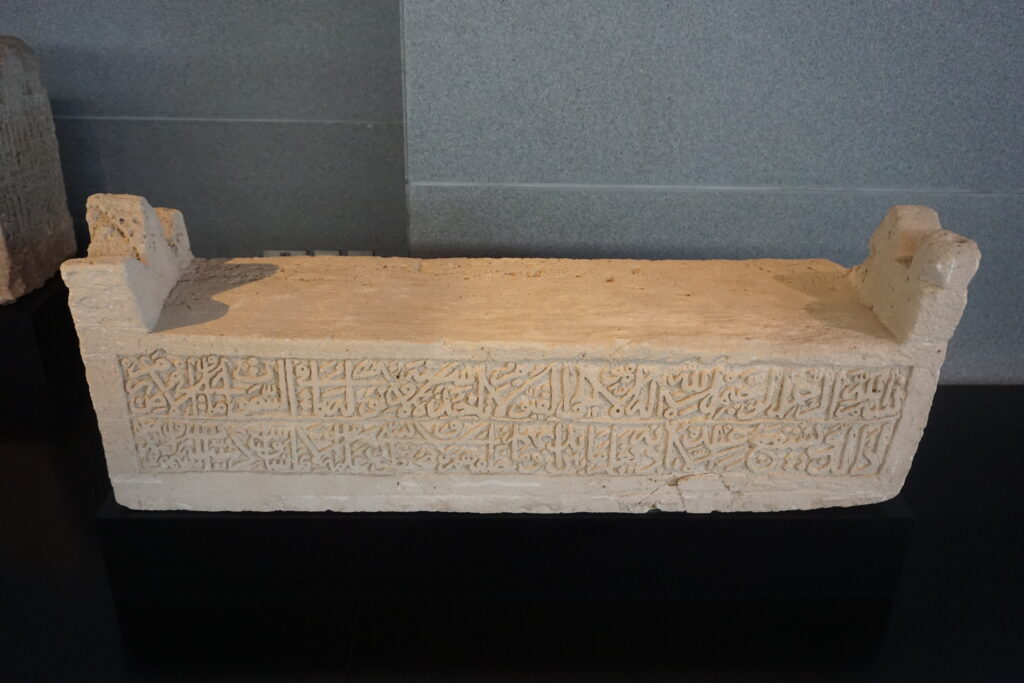
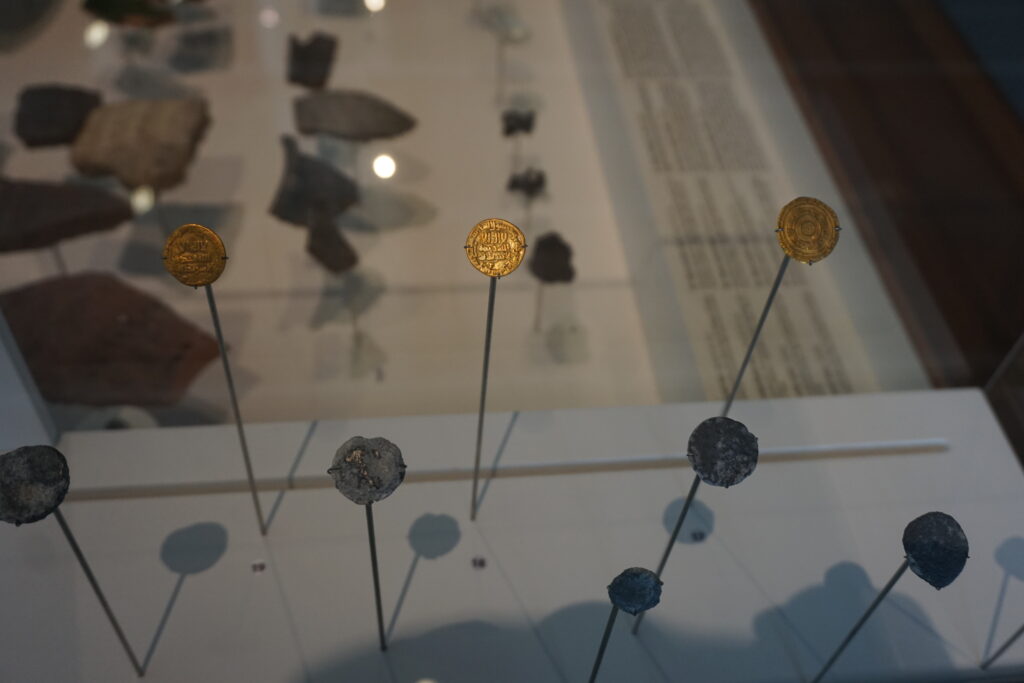
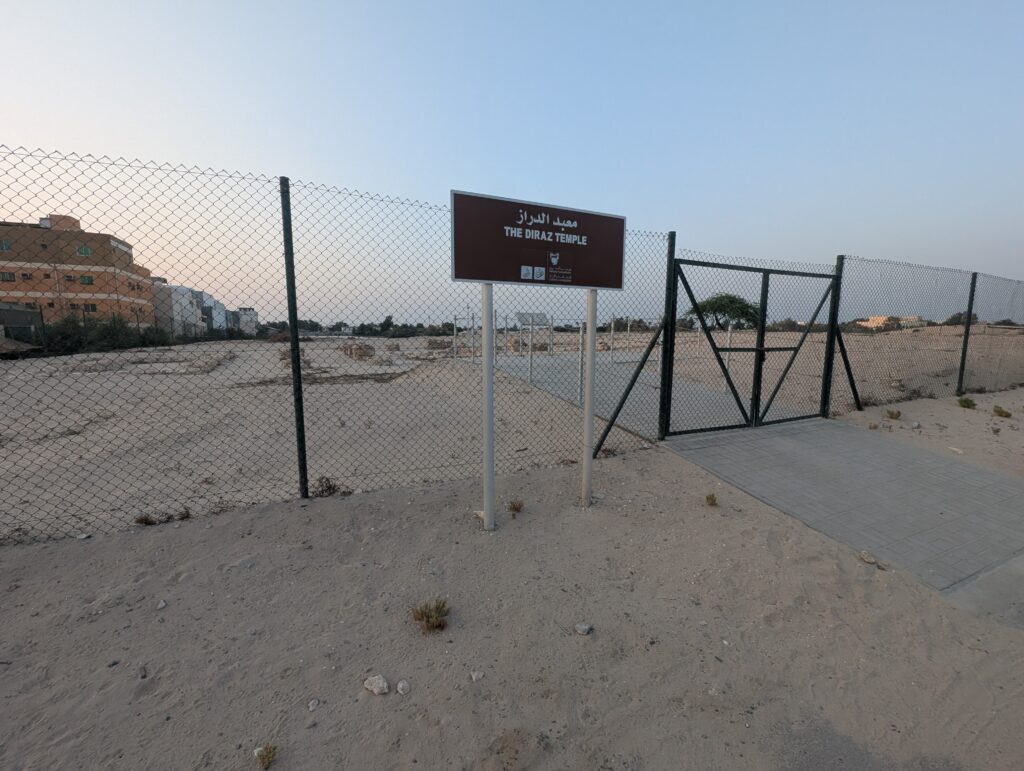
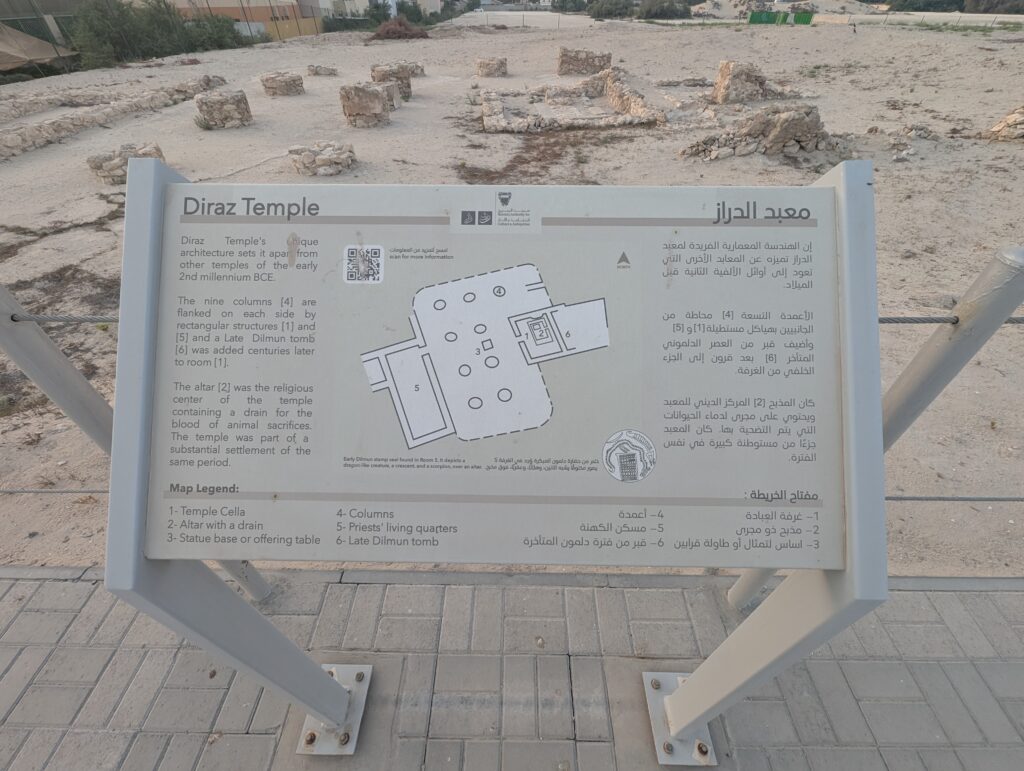

After lunch and a couple of other minor stops, I made my way to Bahrain Fort. The current structure is an impressive Portuguese fortification. It is built on an ancient tel (a mound created by successive layers of human residences built on top of one another). Most people come to the fort to see this Portuguese structure, but archaeologists and historians have taken more interest in the historical discoveries unearthed by digging into the tel. Evidence has been found of occupation as far back as the Copper and Bronze Ages. One of the oldest known documents in the world, a creation story known as The Epic of Gilgamesh, refers to an ancient realm called Dilmun. It was supposed to have been the place Sumerians came from. It was an island kingdom renowned as a wealthy trade hub. Until recently, no one knew exactly where Dilmun was. Inscriptions found in the tel make it clear that Bahrain was, indeed, this ancient kingdom of Dilmun.
I used the last hours of daylight to walk through the large outdoor area of the Portuguese fort and the areas showing evidence of more ancient civilizations being literally dug into. After dark, I moved inside to the museum. This was a nicely organized museum, though it did not allow much photography. They said my Sony a6000 was a “professional camera.” All of my subsequent photos were taken from the Google Pixel. I stayed at the museum until it closed at about 9:00 p.m., then returned to my room for a shower, followed by a very late supper.
I walked to a tourist street known for night life where I knew in addition to bars there would also be people about and restaurants open late. I had a delicious lamb supper. I visited with the restaurant proprietors who were very proud of their operation and its footprint not only in Bahrain but other Gulf States. Outside the restaurant, I was met by a young lady in her early thirties from Eritrea. She never directly solicited me, but invited me to go out drinking and to some traditional African music clubs. I was exhausted anyway, but also a bit suspicious about her intentions, especially after I was approached once more by younger ladies on my walk back to the Ramada, wanting me to join them in non-sexual late night activities.
I am glad I stopped in Bahrain, though after visiting, I regretted having just the one day to explore the country. I had heard of Dilmun, but had no idea that anyone suspected Bahrain might be the site of the ancient trading center, let alone that there had be definitive proof of that tie. I really didn’t even know about the pearling industry prior to doing my pre-visit research on Bahrain, not that I was surprised by this. I also learned of, but was not surprised by the number of foreign workers in Bahrain. Bahrain is a tiny, but relatively wealthy country. It stands to reason that like the other Gulf States, Bahrain would have an excess of money and a shortage of labor. Though the number and diversity of foreign workers I met did not match that of Qatar, it was still very noticeable. Easily the most impressive aspect of Bahrain was the depth and breadth of its archaeological sites.


